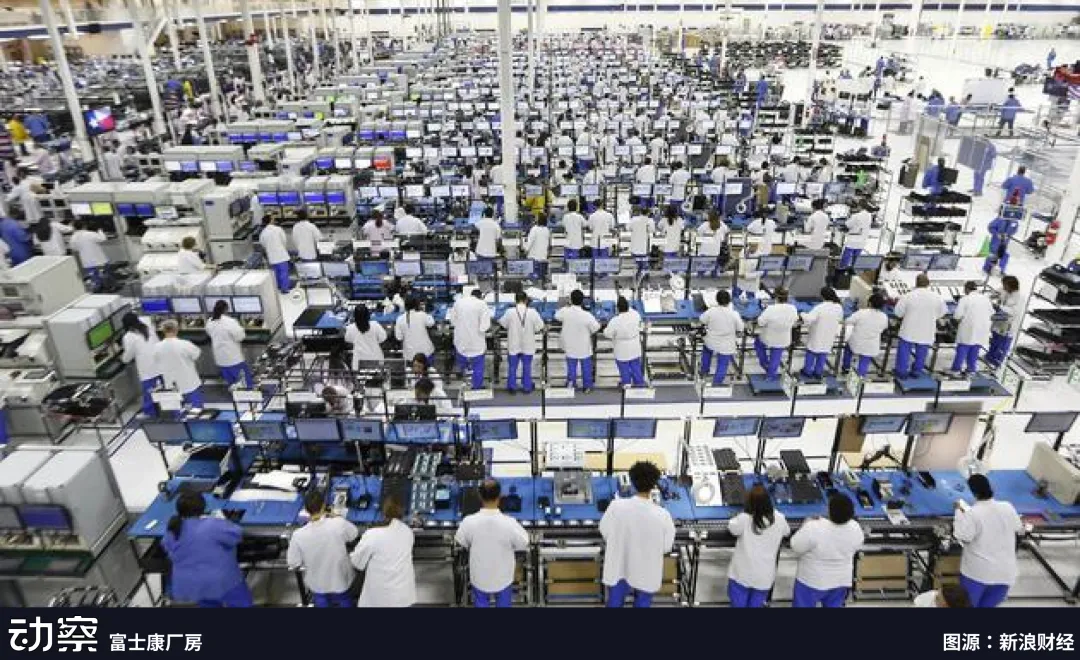The Future Trillion-Dollar Stablecoin Manufacturers
Bridge, a stablecoin issuance platform under Stripe—one of the world’s largest online payment infrastructure giants—has custom-developed the native stablecoin MetaMask USD (mUSD) for MetaMask, a wallet application with over 30 million crypto users.
Bridge manages the entire issuance process, from reserve custody and compliance auditing to smart contract deployment, while MetaMask focuses on refining the frontend product experience for users.
This division of labor represents one of the most prominent trends in the stablecoin industry: more and more brands are outsourcing the complex process of stablecoin issuance to specialized “OEM factories,” much like Apple entrusts iPhone production to Foxconn.
Since the iPhone’s inception, Foxconn has served as its primary manufacturer. Today, approximately 80% of iPhones worldwide are assembled in China, with over 70% produced by Foxconn. At its peak, Foxconn’s Zhengzhou campus, nicknamed “iPhone City,” employed more than 300,000 workers during busy seasons.

The relationship between Apple and Foxconn goes beyond simple outsourcing; it’s a classic case of specialization in modern manufacturing.
Apple focuses its resources on the consumer side—design, user experience, branding, and sales channels. Manufacturing isn’t a differentiator for Apple; it involves massive capital outlays and risks. That’s why Apple has never owned a factory, relying instead on specialized partners for production.
Foxconn, meanwhile, has turned so-called “non-core” areas into its core strengths, building production lines from scratch and managing raw material procurement, process flows, inventory turnover, and shipping schedules—all while relentlessly driving down manufacturing costs. It has established robust industrial processes for supply chain stability, reliable delivery, and production flexibility, providing a frictionless foundation for brands to scale.
This model is rooted in the logic of division of labor. Apple avoids the fixed costs and risks of manufacturing, especially in volatile markets; Foxconn leverages scale and multi-brand utilization to extract total profits from slim per-unit margins. Brands channel creativity and connect with consumers, while OEMs deliver industrial efficiency and cost control—a mutually beneficial structure.
This approach has transformed more than just smartphones. Since the 2010s, computers, TVs, appliances, and even cars have embraced the OEM model. Companies like Foxconn, Quanta, Wistron, and Jabil are now pivotal in global manufacturing. Production has become modular, packaged, and scalable for external clients.
Years later, this exact logic is now being transplanted into a new, seemingly unrelated field: stablecoins.
While issuing a stablecoin appears as simple as on-chain minting, true operation requires far more: establishing compliance frameworks, bank custody, smart contract deployment, security audits, multi-chain compatibility, integrating account systems, and embedding KYC modules. All this demands sustained capital and engineering investment.
As we detailed in “How Much Does It Cost to Issue a Stablecoin?”, a new issuer starting from zero often faces seven-figure initial investments—mostly hard, unavoidable costs. Once live, yearly operating costs can reach into the tens of millions, covering legal, audit, operations, account security, and reserve management.
Now, some vendors are offering these cumbersome processes as standardized, packaged services—providing banks, payment companies, and brands with plug-and-play solutions. While they often remain behind the scenes, their impact is felt in nearly every stablecoin launch.
“Foxconns” have begun to emerge in the stablecoin world.
The Stablecoin World’s “Foxconns”
Previously, launching a stablecoin usually meant one entity handling all three roles: financial institution, tech provider, and compliance team. Project teams had to negotiate with custodial banks, build cross-chain systems, pass compliance audits, and manage licensing in various countries. For most organizations, this was out of reach.
The emergence of the “OEM factory” model solves this challenge. A “stablecoin OEM” is a firm dedicated to helping other companies issue, manage, and operate stablecoins. Rather than building user-facing brands, they supply the full infrastructure that powers these offerings behind the scenes.
These providers handle everything from frontend wallet integrations and KYC modules to backend smart contracts, custody, and audits. Clients simply specify the token and launch markets; the OEM takes care of the rest. When Paxos issued PYUSD for PayPal, for example, it managed US dollar reserves, oversaw on-chain issuance, and ensured regulatory alignment—leaving PayPal to simply add the “stablecoin” option to its user interface.
This model creates value in three core ways.
First, it cuts costs. Building a stablecoin system from scratch can require millions in upfront spend per institution; every step—from licensing to technology, security audits, and banking partners—demands major resources. OEMs lower marginal costs by standardizing these processes across clients.
Second, it accelerates timelines. Traditional financial products take years to launch, and an in-house stablecoin project might need 12–18 months. The OEM approach lets clients roll out a product in just months. Stably’s co-founder has said their API model lets businesses launch a white-label stablecoin in mere weeks.
Third, it shifts risk. The biggest stablecoin hurdles aren’t technical—they’re compliance and reserve management. US regulators like the OCC and NYDFS enforce rigorous standards for custody and reserves. For most would-be issuers, handling every aspect of compliance isn’t viable. Paxos, for example, has landed clients like PayPal and Nubank by holding a New York trust license, legally managing US dollar reserves, and fulfilling disclosure duties.
OEMs have therefore lowered entry barriers: what was once reserved for a handful of giants can now be modularized and sold to many more financial institutions and payment firms.
1 | Paxos: Process as Product, Compliance as Business
Paxos charted its course early—not by pursuing brand dominance or market share, but by building stablecoin issuance into a standardized process that others can buy.
The story starts in New York, where in 2015 the NYDFS opened up digital asset licensing and Paxos became one of the first limited purpose trust companies. This was more than a symbol; it meant Paxos could custody funds, run blockchain networks, and settle assets—qualifications just a handful of US firms possess.
In 2018, Paxos launched USDP, with every step visible to regulators: reserves were held by banks, audits disclosed monthly, and mint/burn logic written on-chain. Few copied the approach—it’s expensive and slow—but the result was a clear, modular structure for standardizing stablecoin issuance.
Eventually, Paxos stopped promoting its own token and began bundling its modules for others.
Its flagship clients: Binance and PayPal.
BUSD was a white-label project for Binance, where Binance controlled branding and user traffic, and Paxos handled issuance, custody, and compliance. This ran for years; in 2023, NYDFS stopped Paxos from issuing new BUSD tokens due to anti–money laundering oversights, revealing for many the OEM relationship behind BUSD.
Just months later, PayPal debuted PYUSD, also issued by Paxos Trust Company. PayPal had the users and reach, but not regulatory clearance and didn’t want to build those systems. By relying on Paxos, PYUSD could legally operate in the US—a textbook example of the OEM approach.

Paxos is now replicating this model globally.
In Singapore, Paxos secured a Major Payment Institution license from the MAS and issued USDG—the firm’s first full-process stablecoin outside the US. In Abu Dhabi, it set up Paxos International to launch the yield-bearing USDL using local authorization to bypass US regulations.
This multi-jurisdictional approach is clear: each client and market requires different compliant issuance pathways.
In 2024, Paxos rolled out a stablecoin payments platform, opened enterprise payment and settlement services, and joined in creating the Global Dollar Network to link stablecoins across brands and systems for unified clearing. Its ambition: to offer a complete backend infrastructure.
But getting close to regulators means more scrutiny. NYDFS cited insufficient anti–money laundering diligence in Paxos’s BUSD project; the result was fines and mandatory remediation. This wasn’t a deathblow but proved Paxos must take the heavyweight, defined compliance route—no shortcuts. Every regulatory and security requirement becomes part of the product. Clients only need a brand; Paxos manages the rest. This is Paxos’s niche: business built on deep integration of technology and regulation.
2 | Bridge: Stripe’s Heavyweight OEM Joins the Arena
Bridge’s entry marks the arrival of a true giant in stablecoin OEMs.
In February 2025, Stripe—a global payments powerhouse serving millions of merchants and processing billions in daily transactions—acquired Bridge. Stripe’s established expertise in compliance, risk management, and global operations is now being brought on-chain via Bridge.

Bridge is built to provide turnkey stablecoin issuance to enterprises and financial institutions—not just tech outsourcing, but turning mature payments infrastructure into standardized on-chain services. Bridge manages reserve custody, compliance, and contract deployment; clients simply use the API to embed stablecoin features into their products.
MetaMask’s partnership showcases Bridge’s value. MetaMask, one of the world’s largest Web3 wallets with over 30 million users, lacks financial licenses and reserve management expertise. Bridge enabled MetaMask to launch mUSD in months rather than spending years building compliance and financial backends.
Bridge’s business model is platform-driven: not custom builds for individual clients, but a standardized, API-based issuance platform. This mirrors Stripe’s classic payments strategy—lowering integration barriers so clients can focus on core business. Just as e-commerce and apps once plugged into Stripe for credit card payments, companies can now issue stablecoins just as easily.
Bridge’s strength comes from Stripe’s global compliance network and broad merchant base, giving Bridge instant market entry and a pipeline of potential clients. For enterprises interested in stablecoins but lacking blockchain or regulatory capabilities, Bridge is an out-of-the-box solution.
But there are caveats. As a subsidiary of a traditional payments firm, Bridge may be more conservative and iterate slower than crypto-native companies. Within crypto, Stripe’s brand doesn’t carry the same weight as it does in the traditional business world.
Bridge is clearly positioned for traditional finance and enterprise clients—evidenced by MetaMask’s choice of a trusted financial partner over a pure tech provider.
Bridge’s arrival signals growing traditional finance interest in stablecoin OEMs. As more players with similar backgrounds compete, the field will mature and standardize—making the sector more competitive and robust.
3 | Stably: A Lightweight Production Line for the Mid-Market
Founded in 2018 in Seattle, Stably began as an issuer of its own stablecoin, Stably USD. The market quickly showed this route was a dead end; competing with industry giants like Tether and USDC was near impossible. Stably pivoted to a new niche: enabling other companies to issue their own coins.
“White-label stablecoin issuance platform” is front and center on its website. Clients don’t need developers or smart contract writers—just an API call, and within weeks they can launch a branded stablecoin. Clients choose the blockchain, name, and branding; Stably integrates the backend.

This approach distinguishes Stably from Paxos. Paxos operates heavy, with all reserves in Paxos-controlled trust accounts (and interest accruing to Paxos). Stably keeps it light: reserves remain in client bank accounts, provided custody standards are met.
Stably avoids handling client funds or custody—its revenue is for tech and operational services only. This means interest stays with the client, and Stably only charges a “labor fee.”
For many mid-sized clients, this is essential. Reserve interest often exceeds token issuance revenue. Choosing Paxos or similar firms means forfeiting this profit. With Stably, clients keep the interest and benefit from rapid, low-cost launches.
Speed is also a major selling point. Stably guarantees launches in “under two months,” and has delivered live deployments in 4–6 weeks. Paxos, by contrast, may take months or longer. For regional payment pilots, timeline directly translates to cost.
Stably’s client profile differs from Paxos: while Paxos serves giants like PayPal and Nubank, Stably targets regional finance, cross-border payments, Web3 wallet services, and e-commerce payment gateways. These clients don’t need best-in-class compliance or global reach—just a solution that works for their segment.
Technically, Stably is chain-agnostic: supporting ETH, Polygon, BNB, Arbitrum, and Base, with ongoing expansions. The goal is always-ready integration—a lightweight, replicable framework.
The downsides are clear: Stably lacks major client endorsements, strong regulatory credentials, and widespread brand awareness. Its appeal is mainly to clients prioritizing speed and higher returns over full regulatory compliance. Thus, it won’t attract top-tier banks or payment leaders, but it carves out space in the mid-market.
Industry consensus holds that potential stablecoin issuers are not just big names. Beyond PayPal and Binance, there are numerous regional banks, payment firms, and B2B platforms. They don’t want to build blockchains, but need stablecoins to support their business. Stably exists to offer a fast, cost-effective, self-reliant path for these players.
If Paxos’s value lies in heavy-duty compliance, Stably proves the market also needs a flexible, low-barrier shortcut for fast issuance.
4 | Agora: A Wall Street–Backed Lightweight Issuance Platform
Agora’s story begins with founder Nick van Eck, whose family runs global asset management powerhouse VanEck—an ETF and fund leader with strong Wall Street roots. Nick brought this traditional financial muscle into crypto, launching Agora.

Early on, Agora secured backing from Paradigm, a top crypto VC with investments in Coinbase, Uniswap, Blur, and others—blending Wall Street legacy with Silicon Valley crypto capital.
Agora aims to lower the industry’s entry barriers; its vision is to make launching a stablecoin as easy as buying a domain name. Most enterprises face steep financial and time costs for licenses, compliance, and smart contract development. Agora provides a plug-and-play white-label platform.
Clients just decide on the coin, brand, and use case. The rest—accounts, reserve custody, contracts, and disclosures—is preconfigured; Agora handles the backend, letting clients launch stablecoins SaaS-style.
Compared to Paxos’s compliance-heavy model, Agora takes a lighter, standardized approach, lowering onboarding costs. For clients, this means quick go-live and low spend, with compliance and risk management covered by Agora’s backend.
This appeals to many: the market contains countless mid-tier payment companies, regional banks, and even e-commerce firms that need stablecoins but can’t build them in-house. Agora’s interface enables these previously unreachable clients.
But bridging vision and reality won’t be easy. Regulatory compliance is still the hurdle—stablecoins can’t be legal everywhere just by acting like a domain registrar. Requirements are highly fragmented, and Agora must adapt to each regulatory regime.
Additionally, Agora lacks major client case studies so far; its big-name backing signals potential, but not proven success.
With Paxos, Stably, and BitGo already established, Agora is the newcomer. It isn’t focused on secure custody or license accumulation, but on delivering stablecoin issuance as a public utility via a minimalist interface. Time will tell whether this approach works—but its vision points to a new direction: stablecoin issuance as a standardized, commoditized service.
What’s Next for Stablecoin OEMs?
Stablecoin OEMs are still emerging, but a trend is clear: as issuance becomes an outsourceable capability, new business opportunities open beyond the act of issuance itself.
Cross-border payments are the most obvious use case. Today, global cross-border transactions still depend on SWIFT—slow, expensive, and offline on weekends. Even for large banks, clearing can take days.
Stablecoins provide a faster solution. OEM providers’ standard APIs allow regional banks or payment firms to join stablecoin rails quickly, enabling real-time cross-border transfers for business clients. This lowers the barriers to what was once infrastructure reserved for financial giants.
Another key use case is treasury management. Most businesses underappreciate the value of efficient cash flow management. Integrating stablecoins into corporate cash pools can streamline supply chain finance, global trade, and routine payments.
For example, stablecoins can facilitate instant fund allocations across subsidiaries, improving transparency and eliminating wait times. The OEM model lets smaller banks and B2B platforms offer these services without building bespoke stacks.
The market itself is evolving. Until recently, stablecoins were mainly for crypto-native projects. Now, as regulation sharpens, traditional institutions are entering. Banks, clearinghouses, and regional finance platforms are starting to integrate stablecoins.
For these firms, in-house development is too risky. OEM providers offer compliance modules and custody APIs as a turnkey solution. Once these institutions join, stablecoin usage and scale can grow exponentially.
Technically, cross-chain operability remains a critical next step. Stablecoins today remain fragmented and non-interoperable across blockchains. Users face friction—one stablecoin can have different versions on Ethereum and BNB Chain, for example.
OEMs are working to standardize cross-chain transfers and settlement, paving the way for seamless asset transfers. Once solved, stablecoin liquidity and utility will leap to a new level.
Business models will also shift. Most OEMs are still in a bespoke-service stage: one client, one solution. But as demand grows, standardized SaaS-style offerings will replace expensive custom deals. Just as cloud computing evolved from managed and private deployments to one-click SaaS, stablecoin issuance will follow the same path. Lower barriers will mean more clients can join.
In short, the future of stablecoin OEMs is not just about helping others issue tokens—they’re building the backbone for global value movement. The ultimate race is not just about compliance and custody, but about embedding stablecoins in real-world commerce at scale, quickly and inexpensively.
Conclusion
Foxconn didn’t design the iPhone, but made its global scale possible. Stablecoin OEMs play the same role: forgoing the spotlight, they do the heavy lifting to bring stablecoins from concept to reality.
Issuing stablecoins has become ever more difficult in recent years. Regulatory requirements have multiplied—licenses, reserve custody, cross-border reporting, contract deployment, auditing—any of which can halt a project. For most companies, direct entry means tens of millions in budgets, a year or more of preparation, and constant regulatory flux. OEM providers convert these barriers into optional services.
This is why PayPal picked Paxos, MetaMask partnered with Bridge, and newcomers like Agora offer white-label issuance. Their approach mirrors Foxconn’s: disassemble complexity into modular, scalable components. Clients simply specify market and brand; the OEM factory does the rest.
With regulation maturing, boundaries for the sector are coming into focus. The US GENIUS Act and Hong Kong’s stablecoin licensing framework are bringing stablecoin issuance into the regulatory mainstream. Clearer rules will drive faster demand growth. Whether it’s payment firms wrapping dollars for the blockchain or regional banks launching new local stablecoins, the next client wave is on the horizon.
These “Foxconn factories” of stablecoins are becoming the invisible infrastructure of finance. They own compliance processes, audit standards, and cross-chain tools—controlling the bridge between digital assets and the real world. Just as Foxconn built a hardware supply chain, stablecoin OEMs are assembling the digital finance production line.
Disclaimer:
- This article was republished from [Sleepy.txt] with copyright belonging to the original author [Sleepy.txt]. For concerns about republication, contact the Gate Learn team and we will address them promptly per our policy.
- Disclaimer: The views and opinions in this article are those of the author and do not constitute investment advice.
- Other language versions were translated by the Gate Learn team and may not be duplicated, distributed, or copied unless referencing Gate, unless otherwise noted.
Related Articles

In-depth Explanation of Yala: Building a Modular DeFi Yield Aggregator with $YU Stablecoin as a Medium

What is Stablecoin?

Top 15 Stablecoins

A Complete Overview of Stablecoin Yield Strategies

What Is USDT0
